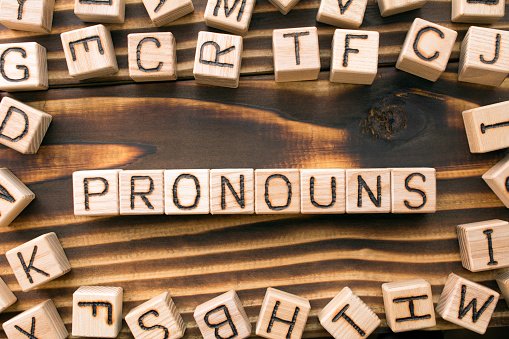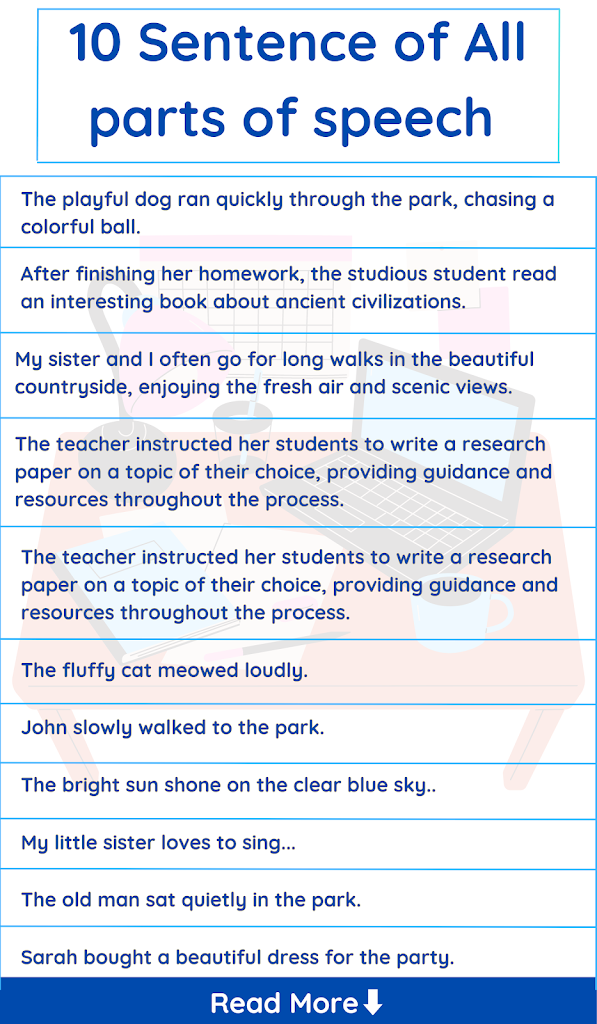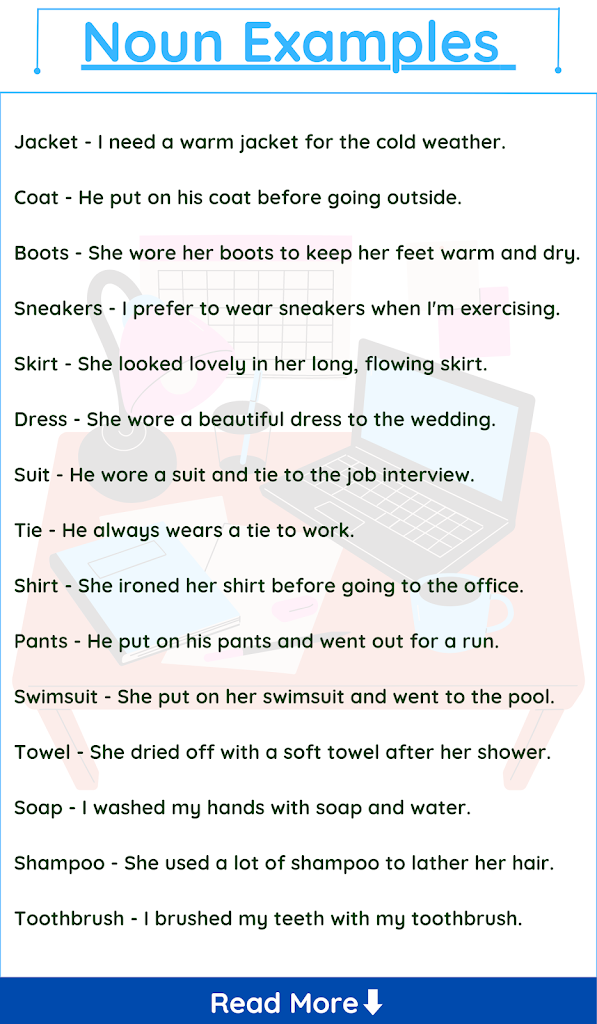What is Verb : Definition, Kinds, Rules and Examples
Introduction
In English grammar, a verb is one of the most important parts of speech. It is a word that describes an action, occurrence or state of being. Verbs play a critical role in constructing sentences and conveying meaning. They can be used to express a wide range of ideas, from physical actions like running, jumping and dancing, to mental actions like thinking, feeling and believing. In this article, we will explore the various types of verbs, how they are used and how they can be conjugated.
 |
| Verb |
Types of Verbs
There are several types of verbs in the English language, each with its own unique characteristics and uses.
Action Verbs
Action verbs are used to describe a physical or mental action. Examples include “run,” “swim,” “write,” “think,” and “sing.” They are often paired with a direct object, which is the receiver of the action. For example, “I run every morning,” where “run” is the action verb and “morning” is the direct object.
Helping Verbs
Helping verbs, also known as auxiliary verbs, are used to form various tenses, moods, and voices of a verb. Examples include “be,” “do,” and “have.” Helping verbs are used in conjunction with the main verb to indicate tense or to show the subject’s ability, possibility or obligation to do something. For example, “I am running,” where “am” is the helping verb and “running” is the main verb.
Modal Verbs
Modal verbs are a type of helping verb that express the speaker’s attitude towards a certain action or state. Examples include “can,” “could,” “may,” “might,” “shall,” “should,” “will,” and “would.” Modal verbs are used to indicate possibility, necessity, permission, ability or obligation. For example, “I should go to bed early tonight,” where “should” is the modal verb.
Linking Verbs
Linking verbs connect the subject of the sentence to a predicate noun or adjective that describes or identifies the subject. Examples include “be,” “appear,” “become,” “feel,” and “seem.” Linking verbs do not describe an action, but rather a state of being or condition. For example, “She is happy,” where “is” is the linking verb and “happy” is the predicate adjective.
Conjugating Verbs
Conjugation is the process of changing a verb to reflect its tense, mood, or voice. Regular verbs follow a pattern when conjugated, while irregular verbs do not.
Regular verbs add “-ed” to the base form to create the past tense, and “-ing” to create the present participle. For example, “walk” becomes “walked” in the past tense, and “walking” in the present participle.
Irregular verbs do not follow a pattern and must be memorized. For example, “go” becomes “went” in the past tense, and “gone” in the past participle.
Examples of verb
Certainly! Here are some examples of verbs used in sentences:
- She runs every morning before work.
- I am reading a book about history.
- They will sing a song at the concert tonight.
- The cat chased the mouse around the house.
- He cooked a delicious meal for his family.
- We have been waiting for the bus for half an hour.
- The children played happily in the park.
- She danced gracefully on the stage.
- He wrote a letter to his grandmother.
- They laughed at the funny joke.
Conclusion
Verbs are essential to constructing meaningful sentences in English. They can be used to describe actions, connect ideas, express attitudes and convey meaning. Understanding the different types of verbs and their uses, as well as how to conjugate them, is crucial for effective communication in written and spoken English.
FAQ
Q: What is a verb?
A: A verb is a word that expresses an action, occurrence, or state of being.
Q: What are the different types of verbs?
A: There are several types of verbs, including action verbs, linking verbs, auxiliary verbs, modal verbs, and transitive and intransitive verbs.
Q: What is an action verb?
A: An action verb is a verb that expresses physical or mental action.
Q: What is a linking verb?
A: A linking verb is a verb that connects the subject of a sentence to a subject complement or predicate adjective.
Q: What is an auxiliary verb?
A: An auxiliary verb is a verb that is used to help form other verb tenses, moods, or voices.
Q: What is a modal verb?
A: A modal verb is a type of auxiliary verb that is used to express a range of attitudes, including ability, possibility, permission, and obligation.
Q: What is a transitive verb?
A: A transitive verb is a verb that takes a direct object in a sentence.
Q: What is an intransitive verb?
A: An intransitive verb is a verb that does not take a direct object in a sentence.
Q: How can I identify the verb in a sentence?
A: To identify the verb in a sentence, look for the word that describes an action or state of being.
Q: Can a sentence have more than one verb?
A: Yes, a sentence can have more than one verb. In fact, complex sentences often contain multiple verbs.


